UPDATED COMPARISON REVIEW – June 1, 2021 – GEWA UP280G & UP260G Digital Pianos – Not Recommended at this time – A couple years ago I did this review of these 2 Gewa digital pianos. I actually played them and spent time with them. Although this digital piano manufacturers always say great things about their products on their web sites, always remember that it is all “hype” until actually proven true by an independent expert like me. I am not the only one out there but I do know what I am talking about as a pro and long time piano teacher. I always play a new brand or model with high expectations and want it to be good. So when I make negative comments about a product it is for a good reason…it’s true and I am not afraid to say so, regardless of the brand.
 If you live in the US then you probably have not heard of the Gewa brand before. GEWA (pronounced with a hard “G” as in “give”) is a music instrument and accessory company from Germany which among other things produces digital pianos. Some of GEWA’s products are produced in China and some made in Germany and GEWA says their digital pianos are made in Germany. GEWA was founded in
If you live in the US then you probably have not heard of the Gewa brand before. GEWA (pronounced with a hard “G” as in “give”) is a music instrument and accessory company from Germany which among other things produces digital pianos. Some of GEWA’s products are produced in China and some made in Germany and GEWA says their digital pianos are made in Germany. GEWA was founded in
1925 in Vogtlandmusikwinkel in Adorf, Germany which is located between the German cities of Dresden and Nuremberg very close to the border of the Czech Republic, so they have obviously been making musical instruments for many years. Their digital piano division is relatively new for this company and as of this updated review, although Sam Ash music stores in the US used to be the Gewa dealer here in the US, I don’t see that brand offered anymore at their stores or on-line. What that means is that they likely did not sell very well, had service issues, a combination of both, or Sam Ash stores decided they just did not want the brand anymore. Since then GEWA has come out with new models called the UP380G and UP360G that are likely the replacements for what I reviewed here a few years ago. I don’t see any indication that those models are available anywhere in the US as of now and I have not played them yet.
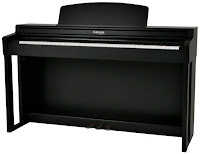 At first glance the GEWA digital pianos look attractive with nice contemporary cabinet design and imitation satin finishes. These pianos have clean lines and a good size LCD display screen to the left of the keyboard to easily control all digital functions of the pianos, which I like. The main differences between the two models is cabinet design (the 280 has a taller profile) and finish color availability with the 280 available in satin black and the 260 available in satin black and satin brown rosewood, along with a more limited digital/MIDI recorder in the UP260G. But all other functions and features are identical including internal speaker system, key action, piano sound, pedaling, etc. The GEWA pianos are available in other countries besides the US and a satin white color is available outside the US but not in the US from Sam Ash Music company as far as I can tell. It you were just to judge these pianos just by their looks and the fact they are made in Germany you might think it’s a safe bet to buy one. So why is it that I don’t recommend the new GEWA digital pianos? Normally I do recommend most new digital pianos including some of the lessor known brands. But after my playing experience on both a new GEWA UP280G and UP260G, I just cannot recommend them at this point primarily because of the key action and noticeably inconsistent volume dynamics from one key to the next, particularly in the middle octaves and more noticeably moving from a white key to a black key.
At first glance the GEWA digital pianos look attractive with nice contemporary cabinet design and imitation satin finishes. These pianos have clean lines and a good size LCD display screen to the left of the keyboard to easily control all digital functions of the pianos, which I like. The main differences between the two models is cabinet design (the 280 has a taller profile) and finish color availability with the 280 available in satin black and the 260 available in satin black and satin brown rosewood, along with a more limited digital/MIDI recorder in the UP260G. But all other functions and features are identical including internal speaker system, key action, piano sound, pedaling, etc. The GEWA pianos are available in other countries besides the US and a satin white color is available outside the US but not in the US from Sam Ash Music company as far as I can tell. It you were just to judge these pianos just by their looks and the fact they are made in Germany you might think it’s a safe bet to buy one. So why is it that I don’t recommend the new GEWA digital pianos? Normally I do recommend most new digital pianos including some of the lessor known brands. But after my playing experience on both a new GEWA UP280G and UP260G, I just cannot recommend them at this point primarily because of the key action and noticeably inconsistent volume dynamics from one key to the next, particularly in the middle octaves and more noticeably moving from a white key to a black key.
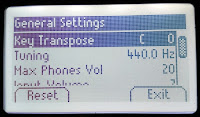 The GEWA stereo piano sound chip with a recorded Steinway grand piano in it seems to be pretty nice (when listening through good stereo headphones) and tone is overall resonate and full. But when I played the piano through its own speakers I found the piano sound to be muffled and boxy sounding like the speakers in the piano (UP280G/260G) just are not that good and/or are pointing down towards the floor from inside the piano. It appears like the sound just isn’t getting out of the cabinet very well towards the player to be clear and life-like as you would find in a real piano or other digital pianos that have better speaker projection. Also, with only 2 full range speakers pointing downward and 40 watts of total power on both models, the volume is loud enough but the 2 main speakers need help getting the sound out of the cabinet and likely the piano needs additional speakers in the form of smaller tweeters pointing towards the player through projection vents, etc as well as the main speakers maybe needing to be re-positioned in some way. In any case, I did not like hearing the piano through its own speakers and much preferred hearing it through stereo headphones although there was a problem there with not enough headphone volume as I talk about later. I will say that the the piano sound itself can be modified by adding more brightness/brilliance to the piano tone which is located in the General Settings control area, and that does help a bit, but it does not resolve the speaker problem.
The GEWA stereo piano sound chip with a recorded Steinway grand piano in it seems to be pretty nice (when listening through good stereo headphones) and tone is overall resonate and full. But when I played the piano through its own speakers I found the piano sound to be muffled and boxy sounding like the speakers in the piano (UP280G/260G) just are not that good and/or are pointing down towards the floor from inside the piano. It appears like the sound just isn’t getting out of the cabinet very well towards the player to be clear and life-like as you would find in a real piano or other digital pianos that have better speaker projection. Also, with only 2 full range speakers pointing downward and 40 watts of total power on both models, the volume is loud enough but the 2 main speakers need help getting the sound out of the cabinet and likely the piano needs additional speakers in the form of smaller tweeters pointing towards the player through projection vents, etc as well as the main speakers maybe needing to be re-positioned in some way. In any case, I did not like hearing the piano through its own speakers and much preferred hearing it through stereo headphones although there was a problem there with not enough headphone volume as I talk about later. I will say that the the piano sound itself can be modified by adding more brightness/brilliance to the piano tone which is located in the General Settings control area, and that does help a bit, but it does not resolve the speaker problem.
 The inconsistent piano volume dynamics when playing individual notes on the keys was probably the most disturbing aspect of playing this piano based on my experience with it. The key action on these pianos is made from plastic but that is not the issue and most digital pianos have plastic keys. In fact, GEWA has a wood key version of the key action in the UP280G and that model is the UP280WK (wood keyboard) but it is not available in the US. According to GEWA, the key action in all of their pianos is not made by them but is made for them by a company called Fatar key action company in Italy. Fatar is well known for making a variety of digital piano key actions for different piano manufacturers and some of them are very good and some of those key actions are not so good in my opinion. The key action in
The inconsistent piano volume dynamics when playing individual notes on the keys was probably the most disturbing aspect of playing this piano based on my experience with it. The key action on these pianos is made from plastic but that is not the issue and most digital pianos have plastic keys. In fact, GEWA has a wood key version of the key action in the UP280G and that model is the UP280WK (wood keyboard) but it is not available in the US. According to GEWA, the key action in all of their pianos is not made by them but is made for them by a company called Fatar key action company in Italy. Fatar is well known for making a variety of digital piano key actions for different piano manufacturers and some of them are very good and some of those key actions are not so good in my opinion. The key action in 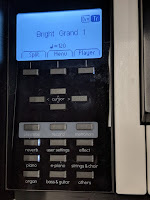
the GEWA pianos would seem to be a nice one from the outside in that it has the newer synthetic ivory-feel keytops which feel nice to the touch, so it looks good and the keys seems to move up and down OK most of the time. But as I mentioned earlier, when you play a white key using normal medium force with your finger to press the key down in the general area of the middle octaves and then you do the same thing playing a black key, the black key is almost twice the volume as the white key next to it, which is not the way real pianos work, especially in the middle octaves. Every key should roughly the same volume if you play the keys with approx the same finger force so that the piano volume will be even and consistent across the entire keyboard. This was not case with the UP280G. It was noticeably jumpy in volume from one key to the next and in fact some of the white notes going from one white note to the next were also inconsistent in volume with some more muted than others. The noticeably uneven volume dynamics when playing the keys, especially in the middle octaves just makes playing music a frustrating and disappointing experience, at least it did for me.
With regard to piano key actions, most of them in different digital pianos have electronic key senors under the keys and if those senors/contacts are not working correctly when the keys are pressed down, then inconsistent key volume can happen like it does on this one. Perhaps this is the reason for this problem but I cannot know this for sure so at the very least there may be many bad key actions in this model that are out there and for me this is just too much of a risk to take and therefore I cannot recommend
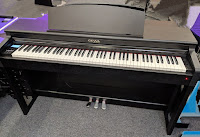
these pianos for this specific reason. It would be very frustrating for any piano student to deal with this situation let alone an advanced player. If this were just a very minor issue I would perhaps not even bring it up, but this is just not normal and in fact is far from normal. I had other people play the UP280G and noticed the same thing right away….softer on one key (in the middle octaves) and much louder on the next when playing with the same expression/finger pressure. The upper and lower octaves of the keyboard I played on seem to work OK overall, so I did not notice the problem there. As I said, the Fatar key action company does make some very nice key actions and I have played many of them over the years. But the one used in these GEWA pianos has negative issues and that needs to be dealt with in some way.
There are two more issues with the key action that I did not personally enjoy which include the key movement being physically sluggish when playing the keys lightly and softly. All 88 keys had this sluggish feeling when playing across the keys lightly and it did not feel quite right to me in this way and there is no way to adjust it. Some people may not find the key action to be sluggish depending on their piano playing experience and level of ability and personal taste, but for me it is not be something I would choose. By the way, it is important to note here that the UP280G and UP260G key action is NOT a grand piano action simulation
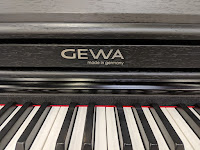
even though GEWA on their web site calls this Fatar key action a “Concert Pianist” action …it’s not even close. They are not using a full length balanced wooden key with counterweights which is what you will find in a real grand piano. I dislike when manufacturers & dealers claim their product does something or has something when it actually does not. The other issue is that normally on a real acoustic piano the weighted keys should get progressively a bit lighter as you go up the keyboard and that would be called “graded” weighted key action. However, even though GEWA claims that this key action is weighted & graded, it really felt like the keys on the right side of the keyboard were just as heavy as on the left bass side of the keyboard and this would not be what you would find on a real piano. Good key actions should be “graded” and get more or less resistant as you move up & down the keyboard, and it needs to be that way as you progress in your piano playing ability. This piano just did not do it for me in that way, even though they claim they have a graded action, so I feel based on the price of these pianos (between $1700US selling price & $2000US selling price plus sales tax, they have a long way to go in getting their key actions working well as with needing to improve their internal speaker systems to project the sound better and more clearly.
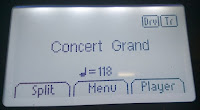 As far as the piano sound itself goes, I actually like it and with 256 note polyphony piano processing (which is a good amount) and a nicely recorded grand piano sound, it was enjoyable to play through stereo headphones but not through the piano speakers as I mentioned earlier. GEWA calls their piano sound technology virtual resonance cross modulation which is a fancy name for trying to create a more realistic piano sound through resonance modeling instead of sampling only. Listening through headphones is where you can tell that the main concert grand piano sound has good resonance and sustain abilities without noticeable piano sound loops, which is nice, and the Bright Grand sound is also pretty good but a bit too bright. However, the other additional acoustic piano sounds including Mellow Grand 1 & 2 were not very good at all as far as I am concerned. Those sounds seemed like they had not only been done in mono instead of stereo, but they did not sound like a real acoustic piano…they just sounded very digital or fake for some reason like some effects were on them and I was not impressed. The only piano sound on this instrument worth any real consideration as being enjoyable to hear is the one main concert stereo piano sound which GEWA touts as being sampled from a famous German Steinway grand piano. This may be true but this grand piano sound does not translate well through the internal speaker system of the piano and certainly not through the key action (from the Fatar action company) being used in these two models. It doesn’t really matter how good your piano sound may be if your piano key action cannot translate that sound into good responsive dynamics that are even and controlled.
As far as the piano sound itself goes, I actually like it and with 256 note polyphony piano processing (which is a good amount) and a nicely recorded grand piano sound, it was enjoyable to play through stereo headphones but not through the piano speakers as I mentioned earlier. GEWA calls their piano sound technology virtual resonance cross modulation which is a fancy name for trying to create a more realistic piano sound through resonance modeling instead of sampling only. Listening through headphones is where you can tell that the main concert grand piano sound has good resonance and sustain abilities without noticeable piano sound loops, which is nice, and the Bright Grand sound is also pretty good but a bit too bright. However, the other additional acoustic piano sounds including Mellow Grand 1 & 2 were not very good at all as far as I am concerned. Those sounds seemed like they had not only been done in mono instead of stereo, but they did not sound like a real acoustic piano…they just sounded very digital or fake for some reason like some effects were on them and I was not impressed. The only piano sound on this instrument worth any real consideration as being enjoyable to hear is the one main concert stereo piano sound which GEWA touts as being sampled from a famous German Steinway grand piano. This may be true but this grand piano sound does not translate well through the internal speaker system of the piano and certainly not through the key action (from the Fatar action company) being used in these two models. It doesn’t really matter how good your piano sound may be if your piano key action cannot translate that sound into good responsive dynamics that are even and controlled.
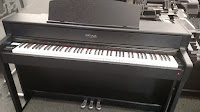
The 3 pedals seem to work good and the GEWA pianos offer half-damper sustain control which is a nice feature to allow variable levels or amounts of sustain depending on how far you depress the sustain pedal. Most brands of pianos have this feature in different price ranges but the GEWA allows some editing of this function so that you can digitally change half-damper point of contact. All of the pedals do what they are supposed to do and the amount of decay time for the piano tone when being sustained is quite good in my opinion so GEWA does a nice job in that way. However, I found the pedals to be noticeably physically noisy when the pedals were going up & down and the decay time and decay volume level of the piano sound is unfortunately inconsistent on some notes sustaining for longer periods of time and notes right next to them might sustain for a shorter amount of time. If a digital piano manufacturer, especially a new one, claims to have made a great digital piano, then not only does it need to have certain features, it especially needs to have consistency from one note to the next and from my personal experience playing on the UP280G, it did not. These pianos also have damper resonance effect which is also a good feature to have in these models so that the natural resonance that you would get from a real acoustic piano when pressing the pedal down is also reproduced in the GEWA digital pianos when doing the same thing.
The GEWA pianos do look good on the outside although don’t expect the cabinets to be made of anything different than any other digital piano company in this price range because the cabinets are normally made of MDF fiber board with a thin layer of imitation textured “contact” style paper over the outside of the MDF material…but as I said this is typical of many digital piano companies because it helps them keep costs down and is good as long as you do not damage the cabinet . If you do damage the outer
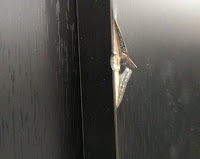
part of the cabinet (see left picture) then repairing it could be very difficult so you need to be careful. As I said, this type of construction is common among digital pianos companies allowing them to keep costs down and still giving the outside a very nice appearance. But as far as these cabinets being all solid wood…they definitely are not. Otherwise as far as appearance and durability, both models are attractive and look to be stable and functional with nice sliding key cover, back privacy panel, and front support legs. The UP280G is a bit taller and a bit more contemporary in design than the UP260G and it’s available only in satin black in the US, although it’s available in satin white in other countries. The UP260G looks a bit more traditional in design and is available in the US in either satin black or satin rosewood and also in satin white for other countries only as I mentioned earlier.
The digital features on these pianos are fairly extensive and are accessed by pressing buttons near the user display screen on the control panel. The functions are pretty intuitive to use once you read the owners manual so that you can understand some of the basics when it comes to using the control buttons. But once you do that then it doesn’t take much time to become familiar with accessing the features. The GEWA pianos have 37 internal instrument sounds including electric pianos, harpsichord, strings,
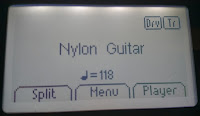
choirs, organs, guitars, synths, and a variety of other tones. Some of them sound pretty good but some of them were actually not realistic at all including the strings, choirs, synths, and a few others. The problem with those sounds is not necessarily the sound itself, but it is when you play the keys and hold your sustain/damper pedal down that those sounds should sustain for a longer period of time like the real instruments do. However these instruments in the GEWA pianos decay (fade out) very fast and sound choppy which is quite unlike what these instruments actually sound like in person and when played in an orchestra. I did like the vintage electric piano sounds quite a bit, but as I said, some of the others just were not done well.
I must comment on the control panel material GEWA decided to use where the buttons and display screen are located on the left side of the keyboard. That material they use is shiny black plastic which scratches easily, shows fingerprints all the time, dust is often noticeable on it, and it is difficult to keep clean. Kawai & Yamaha have the same type of buttons and display screens on their digital pianos and they used to have that same cheap shiny black (plex) plastic on the panel. But they changed over to a non smear, non fingerprint, non reflective smooth mat black finish on
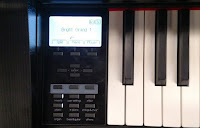
the panels and it makes a huge difference in the way it looks and feels…it’s just so much nicer! Yamaha & Kawai learned from their past mistakes by getting rid of the shiny cheap black plastic and upgrading to the better material and I wish GEWA would have done the same thing, but they did not. Unfortunately there are other European digital pianos companies doing the same thing as GEWA such as Dexibell and a few others, so GEWA is not the only one. But if they want to “play in the big leagues,” they need to step up to the plate and make sure everything is right in their pianos regardless if it costs them a few pennies more to do it. It’s all about the “details” and this detail could have been done much better by them. Some people may not notice this kind of detail but I do because it does not take long after you have pushed buttons on the panel many times to notice all the fingerprints, dust, and occasional scratches that occur and will continue to occur.
As I mentioned earlier, the features and functions on these pianos are fairly extensive with many editing and function capabilities including being able to split or layer any 2 sounds together, transpose the key and modulate easily, change the brilliance of the overall tone (this helped the muffled sound a bit when adding more brilliance), changing the tuning, saving your custom registration setups, being able to change headphone volume input levels, having reverb effects and being able to edit them,
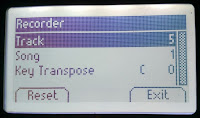
changing touch sensitivity curve, and also being able to play pre-recorded audio and MIDI songs through the piano using the audio MP3 song file player or the multi-track MIDI file player-recorder. The UP260G has a 2-track (2 instrument) MIDI player-recorder and the UP280G has an 8-track (8 instrument) MIDI player-recorder built in so that you can do more extensive so arrangements. Recording your music is a great way to hear how you are doing when practicing a song and the more extensive 8-track MIDI recorder in the UP280G allows a person to create their own music with being able to play and record one instrument sound at a time up to 8 instruments in one song which is pretty cool.
 GEWA also has a digital adjustable metronome for keeping proper time in your music such as 4/4, 3/4, 2/2, 6/8 time, etc and this is especially good for piano students when learning to play a song. However, unlike some other digital pianos, GEWA also includes 10 drum rhythm patterns to play along with instead of just having a metronome, and this is more fun and livens up the song while still allowing you to stay in time. Unfortunately the sound of those percussive drum patterns (beats) such as jazz, rock, pop 80’s, etc, are pretty poor and clunky sounding, and in fact the $200 Yamaha and Casio keyboards out there that have drum patterns (most of them do) are far superior in the way they sound with more realistic percussive drums and patterns than these GEWA pianos have. I suppose having something is better than nothing but I was definitely disappointed by the poor sound quality and noticeable lack of realism of these drum rhythms. In fact, one of the rhythms is named “Acid” and I was thinking “why would GEWA put a rhythm called Acid in a piano like this?” They did not include any Latin rhythms, no country, no waltz 3/4 time, no 60’s, no 70’s, no 50’s, no big band, and the jazz rhythm they had in there was so bad it was unusable. There were so many better drum rhythm choices and yet they included “Acid?!” To me whoever designed the drum patterns and sounds and made those decisions at GEWA should get someone else to do the job or just leave off the rhythms altogether since they are of such poor quality, especially compared to what I was expecting out of a $2000 piano.
GEWA also has a digital adjustable metronome for keeping proper time in your music such as 4/4, 3/4, 2/2, 6/8 time, etc and this is especially good for piano students when learning to play a song. However, unlike some other digital pianos, GEWA also includes 10 drum rhythm patterns to play along with instead of just having a metronome, and this is more fun and livens up the song while still allowing you to stay in time. Unfortunately the sound of those percussive drum patterns (beats) such as jazz, rock, pop 80’s, etc, are pretty poor and clunky sounding, and in fact the $200 Yamaha and Casio keyboards out there that have drum patterns (most of them do) are far superior in the way they sound with more realistic percussive drums and patterns than these GEWA pianos have. I suppose having something is better than nothing but I was definitely disappointed by the poor sound quality and noticeable lack of realism of these drum rhythms. In fact, one of the rhythms is named “Acid” and I was thinking “why would GEWA put a rhythm called Acid in a piano like this?” They did not include any Latin rhythms, no country, no waltz 3/4 time, no 60’s, no 70’s, no 50’s, no big band, and the jazz rhythm they had in there was so bad it was unusable. There were so many better drum rhythm choices and yet they included “Acid?!” To me whoever designed the drum patterns and sounds and made those decisions at GEWA should get someone else to do the job or just leave off the rhythms altogether since they are of such poor quality, especially compared to what I was expecting out of a $2000 piano.
One of the things I find useful on some digital pianos is their ability to play General MIDI multi-track song files. A General MIDI (aka: GM) song is a format what allows up to 16 separate instruments to playback simultaneously through your piano from a USB flash drive. There are thousands of GM formatted songs available on the internet through MIDI song web sites although most of the good ones do have a cost to them. I have used, played, and recorded multi-track GM songs for many years so I

have a lot of experience with them and know what they can sound like. They can be useful in learning songs from some of your favorite artists as well as getting play-along MIDI songs that go with some popular piano educational curriculum that teachers use in their studios for their students to better learn rhythm & timing while having some fun backup music. To have proper playback of GM songs a digital piano should have at least 16 tracks of playback ability along with a minimum of 128 GM realistic instrument sounds that are formatted in a specific order so that the songs during playback in the piano can respond correctly and sound good. The GEWA pianos do have GM song playback capability, although the UP280G only has 8-track playback which is the one I tried the MIDI files in, and the UP206G only has 2-track playback capability. GEWA mentions all this in their owners manual.
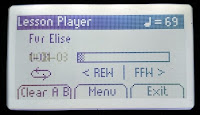
I have heard many digital piano models over the years from Yamaha, Kawai, Roland, and Casio and others play back GM song files from movies, jazz tunes, pop music, Disney music, and many other types of music and I know great they can sound just like the original song arrangement in many cases. However I am sorry to say the GEWA GM instrument reproduction along with its ability to playback the instruments correctly from a number of songs doesn’t come close to the other pianos I mentioned. The GM files playing through the GEWA pianos in some cases make the songs sound like they have toy instruments instead of real ones, or the songs don’t play back completely normal, and the volume balance between instruments playing back in the song is way out of balance with some instruments and percussion too soft while others may be too loud. However some GM songs did sound really nice and well balanced, so it was just hit & miss. Overall, very unimpressive from a piano that is supposed to have a nice GM song player. The digital controls of the MIDI player through the user interface are OK, but not great…they should be upgraded as well. Fortunately GEWA has some built-in classical music lesson songs that you can play along with and they sound good because it just plays piano parts at any tempo you want. I like that feature but the General MIDI feature is just OK and you cannot depend on it to play back the GM songs correctly.
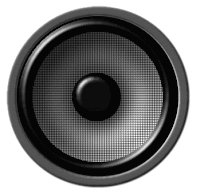 When it comes to connectivity on these GEWA pianos, they offer a good variety including MIDI in & out connectors, stereo audio input and audio output, 2 stereo headphone jacks, a USB to external device connector, and a USB memory flash drive
When it comes to connectivity on these GEWA pianos, they offer a good variety including MIDI in & out connectors, stereo audio input and audio output, 2 stereo headphone jacks, a USB to external device connector, and a USB memory flash drive
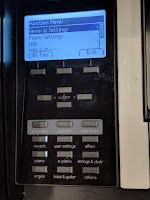
input connector so I am pleased they included all the necessary connectors that people like to have. GEWA also added a popular connectivity feature that many shoppers like to have which is Bluetooth audio wireless connection to external device. a few other manufacturers are now offering this feature in their pianos as well and the advantage is that you don’t need to connect an audio cable to the device from your piano because Bluetooth makes it wireless. The reason someone would want to use this feature is that they may want to play their favorite iTunes from their iPhone or iPad through the piano speaker system to have a place in the home to play your tunes. This is a pretty cool feature and can work well depending on the quality of the internal speaker system in the piano. Considering the GEWA pianos only have a 2 speaker 40 watt system and the internal piano sound is somewhat muffled and boxy as I mentioned earlier, I really don’t know if the external songs you would be playing through the piano speakers using Bluetooth audio streaming would sound good or not because I did not get a chance to try that out. But I am a bit doubtful about the quality of external music coming through the piano given what I experienced just playing the piano through its own speakers. So we’ll just have to wait and see. One other thing I noticed about connectivity was the use of headphones. I normally use a nice, higher quality pair of headphones and when I was trying out the Gewa pianos the maximum headphone volume that the Gewa pianos allowed the piano sound to be heard through the headphones with the master piano volume up to its loudest point was surprisingly low and difficult to hear. Many other digital pianos I have played using headphones have no trouble at all with headphone volume and most of the time I have to turn the piano volume down so that it is not too loud coming through the headphones, but not so on the Gewa pianos based on my experience with them.
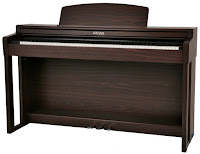 In the final analysis a good piano needs to, first and foremost, have a solid, responsive key action that will reproduce the piano sound from the internal sound chip in an even and consistent way across the 88 keys. In my opinion the key action in this piano just does not do that and that’s my biggest complaint and why I cannot recommend these new GEWA pianos at this time. The other things I discussed which I was not fond of such as the internal speaker system, some the instrument sounds, the GM song playback, the drum rhythms, etc are bothersome but not enough for me to not recommend the UP206G and UP208G. They would still be fine overall but in reality I believe you would get much more for your money in terms of quality key action, piano sound, pedaling, and features in this price range from the well known brands such as Yamaha, Kawai, Casio, Roland, and a few others. I really was looking forward to playing one of these pianos and coming away very satisfied, but unfortunately it did not work out that way. GEWA is simply not ready for “prime-time” in the US right now
In the final analysis a good piano needs to, first and foremost, have a solid, responsive key action that will reproduce the piano sound from the internal sound chip in an even and consistent way across the 88 keys. In my opinion the key action in this piano just does not do that and that’s my biggest complaint and why I cannot recommend these new GEWA pianos at this time. The other things I discussed which I was not fond of such as the internal speaker system, some the instrument sounds, the GM song playback, the drum rhythms, etc are bothersome but not enough for me to not recommend the UP206G and UP208G. They would still be fine overall but in reality I believe you would get much more for your money in terms of quality key action, piano sound, pedaling, and features in this price range from the well known brands such as Yamaha, Kawai, Casio, Roland, and a few others. I really was looking forward to playing one of these pianos and coming away very satisfied, but unfortunately it did not work out that way. GEWA is simply not ready for “prime-time” in the US right now
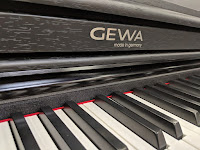
and they really need to get their act together to be competitive with the well known brands who have a foothold in the US digital piano market. Also I have no idea what the long term durability of these pianos will be like and if service and/or parts would be readily available in the US should any of them need service. According to GEWA their product warranty is 2 years whereas most of the well known digital piano brands in this price range are anywhere from 3-5 years with in-home service. Two years is certainly OK but it is not competitive, although you can purchase extended warranties from the dealer, but why should you have to pay more money when the other brands extend it already and for no extra charge. Just another detail where GEWA could do better and offer a longer warranty, especially because they are an unknown, unproven brand in the US. I do look forward to this brand from Germany becoming stronger in the world of digital pianos one day, but they are not there yet with these 2 models and have a quite a way to go in my opinion.
If you want more info on new digital pianos and LOWER PRICES than internet discounts, please email me at tim@azpianowholesale.com or call direct at 602-571-1864.





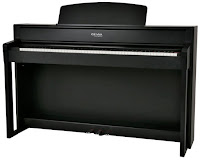
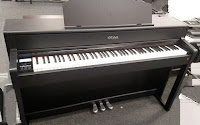
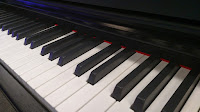
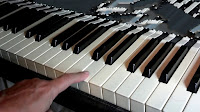


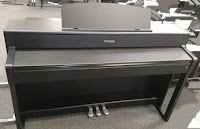
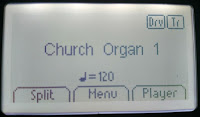
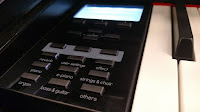

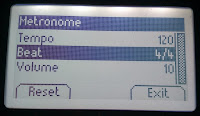
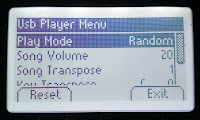
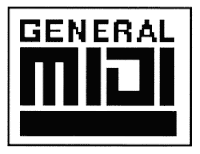
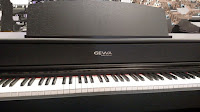










This is indeed disappointing to read because what is available on YouTube and elsewhere for this brand makes it sound quite good. By contrast, the only brand that has satisfied my ear in the past is Kawai.
Perhaps the sample Gewa piano wsa defective? Personally, I would have concluded as much unless other pianos in the same model exhibited the same issue.
I just tried the same (or very similar, don't remember exactly) Gewa piano in my local music store and I generally agree with the review. The main piano and electric piano sounds were very good and playable, I especially liked that the organ sounds had Leslie slow/fast switch with the middle pedal – most digital pianos don't have a proper Leslie, although one shouldn't rely on a digital piano for Hammond playing. But the speakers really sounded muffled – they can't be compares to similarly sized and priced Yamahas for example. And the keyboard really was sluggish. The simpler, cheaper Gewas had faster, more pleasing keyboards for some strange reason. Anyway, the best way to choose an instrument is to try different ones and choose the one that you feel the most connected to by means of sound and feel.
I read your GEWA 260 280 review. Have you played GEWA 380 400? Do they improve the problems that you find out? I’m going to buy a “steinway sound” piano but still considering.